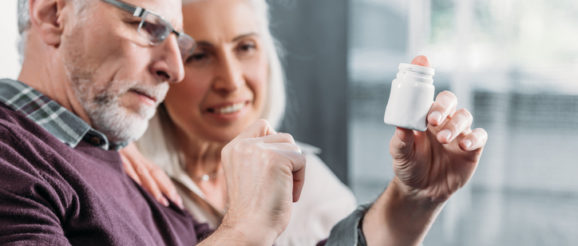Adaptogens, nootropics, antioxidants: Latest trends in healthy aging innovation

Live Q&A with experts in the Healthy Aging category
Graham Rigby, chief innovation officer for the supplement brand Care/Of, said ‘healthy aging’ is a big concept to wrap one’s head around. Breaking it down into more manageable chunks yields some insights. Lying at the core of a healthy aging process is being able to cope with the vicissitudes of life, Rigby said.
“First I take a step back and try to define what ‘health aging’ means, and that can lead you to solutions in the area of health and wellness,” Rigby told NutraIngredients-USA.
“One category that has gotten a lot of attention and is growing fast is the use of adaptogenic herbs that help us adapt to stress,” he said.
Tips from Ayurveda
Rigby said ashwaganda in particular is coming to the fore in this area. It is a mainstay Ayurvedic rasayana, or overall wellness tonic.
“The benefits of an herb like that are widespread because it does help the body adapt to stress, whether its emotional stress or work stress. With a rasayana, it’s really about maintaining a vibrancy,” Rigby said.
Prior to taking on his role at Care/Of, Rigby worked with Organic India, where adaptogenic herbs formed the core of the product portfolio. He said these ingredients help deliver on the promise that most older supplement users are seeking, that being how to wring more healthy years out of the twilight of their lives. And that promise extends to younger consumers, too, he said.
“Older people want to continue to be able to work about and be less stressed after. An adaptogenic herb can help avoid excess inflammation in that regard. But by the same token, you have younger people who are looking to perform better, so then there is this overlap with these two disparate consumer groups,” Rigby said.
Innovation in nootropics
In addition to adaptations to stress, Rigby said cognitive support is another key facet of health aging product development. While making claims in this area is something that companies have tread carefully around, he said there is nevertheless no lack of innovation in these products.
“With healthy life expectancy continuing to go up, there is more focus on the brain. There is a lot of product development in the nootropic category, products that are focusing on short term memory loss and maintaining the power of recall. We all want to remain sharp in those areas,” he said.
Integrated view
But a savvy marketer will keep in mind that these areas are integrated, Rigby said. The brain, after all, is just one organ in an entire system.
“Younger consumers tend to be looking for something that is experiential to know that it is working. For aging consumers, though, there is a delta, a balance point, where you are feeling good and looking good and you are trying to keep that front and center so that you can continue to do the things that you always did,” Rigby said.
“People want to still be able to climb mountains when they’re in their 70s. Once you start to lose the ability to do the things you love to do, you start to lose cognitive performance,” he said.
Rigby said product developers are dealing with an aging demographic that is more connected to health and wellness than ever before. When people reached their 60s in past decades, they were expecting to experience loss of function, pains, aches and weakness. No more, he said.
“The expectation keeps going higher and higher,” he said. “Older consumers now don’t want to retire and be immobile. They want an active, healthy retirement. They know they might not go up the mountain as fast as they did in their 20s, but they still want to go up,” he said.
Antioxidants still have role to play
Rigby said that as people age, their bodies deal less effectively with free radicals in their bodies, which is a natural part of the aging process. Helping consumers do that better can help flatten the curves associated with decreased tissue function. Even though quoting ORAC values is now passé, that doesn’t mean the physiological process no longer has meaning, he said.
“A lot of what we are dealing with on the vitamin side is research from teh early to mid twentieth century. Like what’s been done on vitamin C, for example. There are many more compounds that are more antioxidative,” Rigby said.
“When we support the body’s ability to neutralize free radicals, you are keeping Krebs cycle in the mitochondria intact. You are supporting a key part of the cellular structure,” he said.
“When you look at the world’s healthiest, longest lived cultures, places like Japan or Crete, people are eating herbs with a lot of antioxidant potential,” Rigby said.
Rigby will join Guru Ramanathan, PhD, chief innovation officer of GNC on a live discussion panel during NutraIngredients-USA’s Healthy Aging event next week
Join us for our FREE online conference on Thursday, Oct. 25.
Healthy aging is a hot product development category, as companies try to help consumers realize the goal of making 60 the new 40. NutraIngredients-USA’s online event will feature a market overview by category expert Diane Ray of the Natural Marketing Institute. It will also feature sessions by top suppliers.
Click HERE to register and learn more.
To close the event, a blockbuster panel of legal, scientific and product development experts will consider the burning questions and future directions of this increasingly vital industry sector. We will look at formulation questions, market dynamics, claims issues and more.
